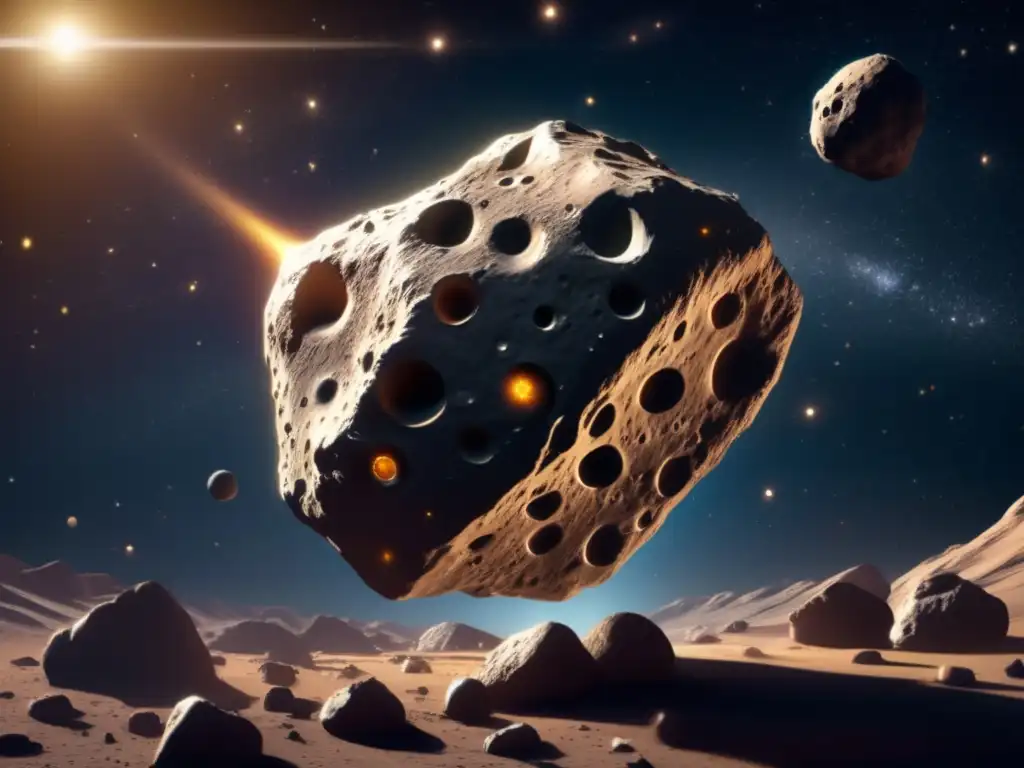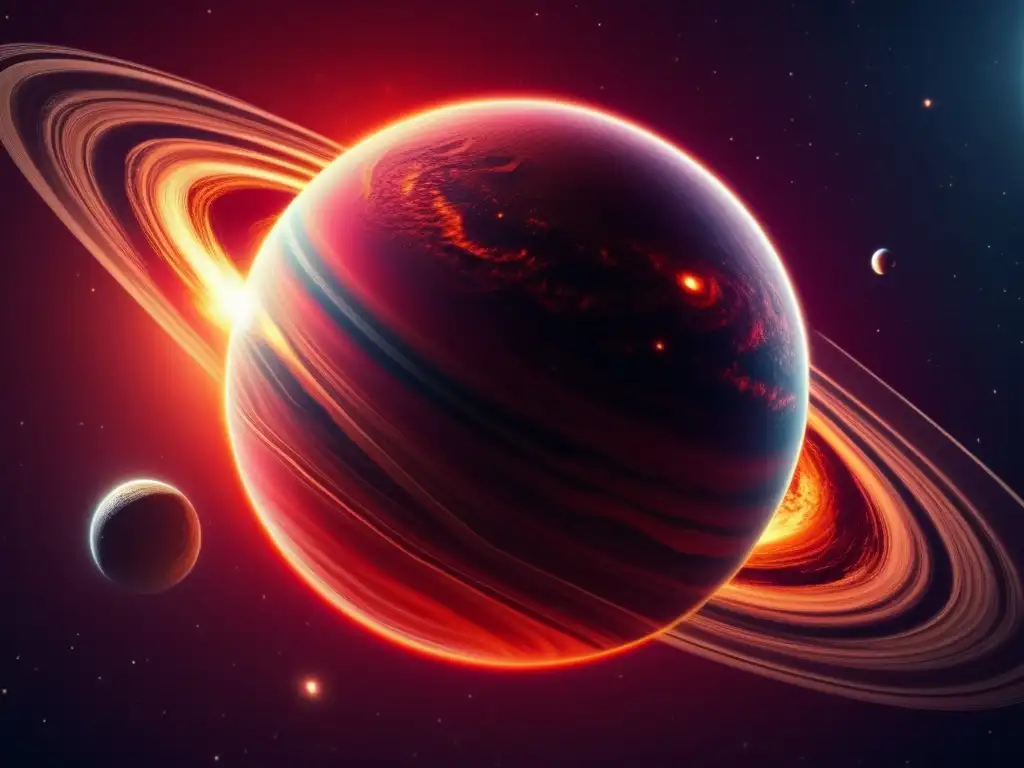The Unusual Spin Of 2008 HJ: A Fast Rotator

Introduction
2008 HJ is an asteroid that was discovered on April 28, 2008, by the Catalina Sky Survey. It belongs to the group of Apollo asteroids and has an Earth-crossing orbit. One of the most remarkable characteristics of this asteroid is its fast rotation, which sets it apart from other celestial objects of its kind. In this article, we will explore the unusual spin of 2008 HJ and its implications for our understanding of asteroid behavior and dynamics.
What Makes 2008 HJ a Fast Rotator?

Composition
The composition of an asteroid can affect its rotational speed. In the case of 2008 HJ, observations suggest that it is composed of loosely packed material, which makes it more susceptible to centrifugal forces. As a result, the asteroid rotates at a much faster rate than other asteroids of a similar size and mass.
Impact Events
Another possible explanation for 2008 HJ's fast rotation is that it may have experienced one or more impact events in the past. These impacts could have changed the asteroid's shape or spin rate, leading to the current state of rapid rotation.
Gravitational Influences
The gravitational interactions between 2008 HJ and other objects in the Solar System could also play a role in its high spin rate. For example, close encounters with planets or moons could cause significant changes in the asteroid's orbit and rotation.
Is Fast Rotation Common Among Asteroids?

Asteroids in General
Fast rotation is not uncommon among asteroids, especially those that have an irregular shape or a low density. It is estimated that about 20% of all known asteroids have a rotation period of less than 2 hours.
2008 HJ in Comparison
However, even among fast-rotating asteroids, 2008 HJ stands out for its exceptionally short rotation period, which is only about 42 seconds. This makes it one of the fastest rotating objects in the Solar System.
Other Notable Fast Rotators
Some other notable fast-rotating asteroids include Kleopatra, which rotates once every 5.4 hours and has a highly elongated shape, and Bennu, which rotates once every 4.3 hours and is the target of NASA's OSIRIS-REx mission.
What Are the Implications of 2008 HJ's Unusual Spin?

Internal Structure
One of the main implications of 2008 HJ's fast rotation is that it can provide clues about its internal structure. If the asteroid is indeed composed of loosely packed material, as some observations suggest, then its high spin rate could cause it to become even more elongated or even break apart over time. On the other hand, if the asteroid is more solid than previously thought, then its rapid rotation could help to explain how it has maintained its shape and stability over time.
Mission Planning
The fast rotation of 2008 HJ could also pose challenges for future missions that may seek to study or land on the asteroid. The high spin rate could make it difficult to accurately track the asteroid's position and trajectory, or it could create hazardous conditions for a spacecraft trying to land on its surface.
Scientific Understanding
Overall, the unusual spin of 2008 HJ provides a fascinating case study for scientists seeking to better understand the behavior and dynamics of asteroids. By studying the rotational characteristics of this and other fast-rotating asteroids, researchers can gain insights into the internal structure, composition, and evolutionary history of these objects.
Frequently Asked Questions

-
How was 2008 HJ discovered?
2008 HJ was discovered on April 28, 2008, by the Catalina Sky Survey, which uses telescopes located in Arizona to search for near-Earth objects.
-
What is the rotation period of 2008 HJ?
The rotation period of 2008 HJ is approximately 42 seconds, making it one of the fastest rotating objects in the Solar System.
-
What factors can influence an asteroid's rotation rate?
An asteroid's composition, impact events, and gravitational interactions with other objects in the Solar System can all affect its rotation rate.
-
What are some other notable fast-rotating asteroids?
Some examples include Kleopatra, which rotates once every 5.4 hours, and Bennu, which rotates once every 4.3 hours.
-
What are the implications of 2008 HJ's rapid rotation?
The unusual spin of 2008 HJ can provide insights into its internal structure, pose challenges for future missions to study or land on the asteroid, and help scientists better understand the behavior and dynamics of asteroids in general.
Conclusion
The unusual spin of 2008 HJ is a fascinating example of the complex and dynamic nature of asteroids. By studying this fast-rotating object and others like it, scientists can gain valuable insights into the composition, internal structure, and evolution of these celestial objects. As we continue to explore the Solar System and beyond, the study of asteroids will remain a critical area of research and discovery.
We hope you found this article informative and engaging. Please share your thoughts and questions in the comments section below, and consider subscribing to www.asteroidrealm.com for more articles and updates on all things asteroid-related. Thank you for reading!
Additional Resources

If you would like to learn more about asteroids and their fascinating properties, here are some additional resources to explore:
- NASA's Asteroid and Comet Watch
- JPL Near-Earth Object Program
- NASA Solar System Exploration: Asteroids
 Discovering The Spectral Classes Of Asteroids
Discovering The Spectral Classes Of Asteroids Missions To Asteroids: From Galileo To Lucy
Missions To Asteroids: From Galileo To Lucy The Fascinating Case Of Asteroid 1999 JM8
The Fascinating Case Of Asteroid 1999 JM8If you want to discover more articles similar to The Unusual Spin Of 2008 HJ: A Fast Rotator, you can visit the Asteroid Discoveries category.
Leave a Reply

Articulos relacionados: